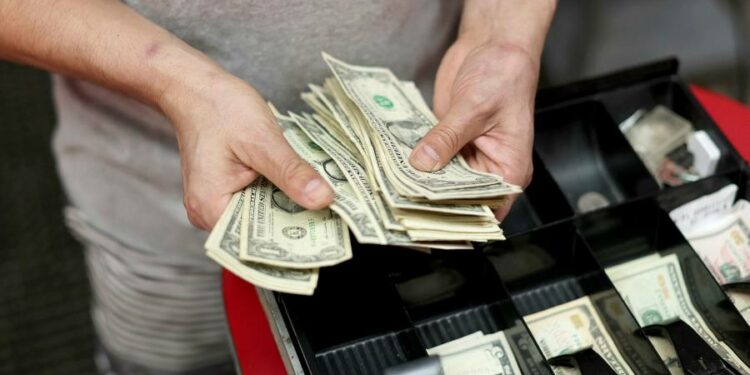European stocks and Wall Street equity futures edged higher, after a relief rally in the previous session, powered by US inflation data coming in no worse than feared, gave way to questions about how long it would take for surging price rises to moderate.
The Stoxx 600 equity gauge added 0.1 per cent, having ended Wednesday’s session 0.6 per cent higher in response to a 7 per cent annual gain in US consumer prices that investors calculated did not speed up the Federal Reserve’s timetable for withdrawing its pandemic-era monetary stimulus.
Futures contracts betting on the direction of the blue-chip S&P 500 share index and the top 100 stocks on the technology-focused Nasdaq Composite added 0.2 per cent.
Global equity markets remain close to all-time highs, thanks to a sustained period of loose US monetary policy and analysts’ views that the Omicron coronavirus variant will prove less economically disruptive than previous strains.
Traders also continue to expect the US central bank, whose monetary policy decisions affect funding costs and stock market valuations worldwide, to raise its main funds rate three to four times this year to about 1 per cent, after tethering it close to zero from March 2020.
The relatively benign outlook for funding costs is based on assessments that US inflation, driven by rebounding energy prices and bottlenecks in supply chains disrupted by coronavirus, will soon peak.
“People like the comfort blanket of what feels like the mathematical certainty that a 7 per cent inflation rate cannot continue,” said Sunil Krishnan, head of multi-asset funds at Aviva Investors.
But he said this was preventing investors from “asking the tough questions” about how far US inflation would fall and the possibility of the Fed needing to raise interest rates beyond what markets expected. “If we are looking at 3.5 per cent inflation by the end of the year, the Fed will still have a lot of wood to chop,” he said.
Highlighting inflationary pressures, data on Thursday showed US producer prices rose 9.7 per cent in the year to December, slightly below economists’ forecasts but also reflecting the largest annual increase since this measure of what businesses pay their suppliers was first calculated in 2010.
Markets have priced US rates rising to 2 per cent at the end of the central bank’s tightening cycle, which Kit Juckes, strategist at Société Générale, described as “the stuff of fairy tales”.
“Markets are in wonderland,” Juckes wrote in a note to clients. “Equities are ignoring the faster prospective pace of tightening,” he said, which “just reflects optimism than the worst of the Covid-19 pandemic is behind us”.
The yield on the 10-year US Treasury note rose by about 0.01 percentage points to 1.74 per cent on Thursday as the price of the benchmark government debt instrument fell.
The dollar index, which measures the US currency against six others, dipped 0.2 per cent after dropping to its lowest point since November earlier on Thursday morning.
The euro added 0.2 per cent against the dollar to $1.14.
In Asia, Hong Kong’s Hang Seng share index closed 0.1 per cent higher and Tokyo’s Nikkei 225 dropped 1 per cent.
Brent crude, the oil benchmark, fell 0.3 per cent to $84.43 a barrel.











